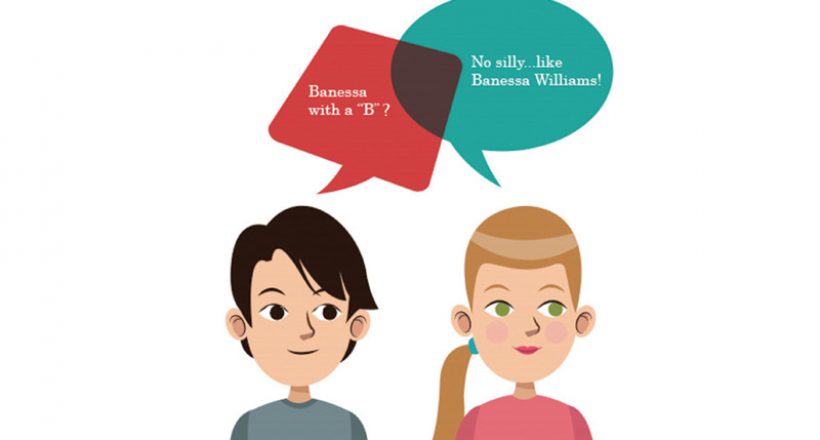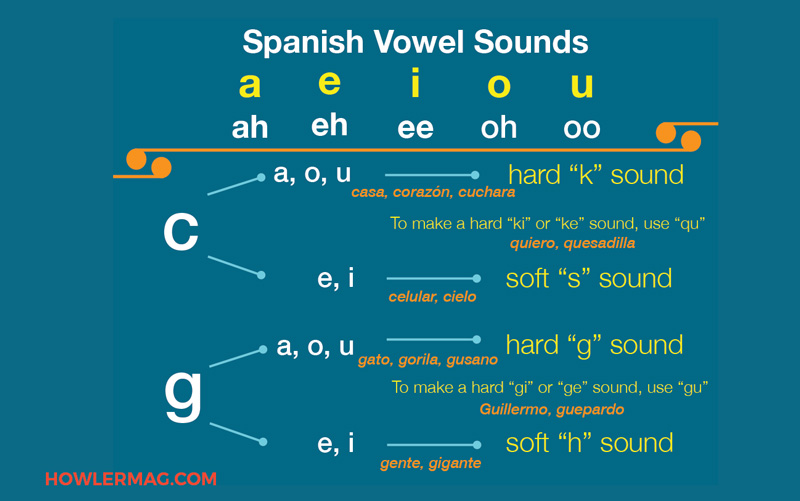
Spanish Pronunciation: Spanish Vowels and Spanish Consonants
- JUL 04, 2018Warning: count(): Parameter must be an array or an object that implements Countable in /home/howlermag/public_html/old/wp-content/themes/new-paper/includes/general.php on line 193

Your Lead Paragrpah goes here
Spanish Pronunciation – Spanish Vowels and Spanish Consonants: If I had to single out one crazy-difficult thing about learning English, it would be pronunciation. It’s as if the language had a drunken grammar fairy who burped and erratically waved her wand to create gems like “read” and “read.” How else but during a bender would she just randomly assign different sounds to the same vowel pair for past and present tense scenarios? In reality, we can thank the French for this particular example of madness in our spoken word rules. But English is littered with so many others that make the drunken fairy explanation seem more plausible. What about “bomb,” “tomb” and “comb”… can you hear her mocking cackle?
To all the longstanding sufferers of English language-induced PTSD seeking to learn Spanish, I say, take heart. When it comes to pronunciation, you’re on easy street. With just a couple of basic rules to get down, you are almost good to go.
Another Costa Rican quirk
is that “b” and “v”
have the same sound,
and it’s always “b.”
Spanish Vowels and Vowel Blends
English vowels on their own have three sounds each, but vowel pairs or that dastardly silent “e” can cause all sorts of havoc. Spanish has no such madness; there is simply one sound for each vowel and nothing more. Hold on to your boots — that means no vowel blends … none, zilch.
In fact, pronunciation rules in Spanish overall are steadfast, with few exceptions. Pronunciation is phonetic, which means pronounced the way it looks.

Spanish Consonants aren’t so constant
While vowels have only one sound in Spanish, consonant sounds involve variations. Some of the same English rules apply, including the pronunciation of “c” or “g,” depending on the vowel it precedes.
The “c” is hard (“k” sound) when paired with “a” (casa, house), “o” (corazón, heart) or “u” (cuchara, spoon). But it’s soft (“s” sound) with “e” (celular, cellphone) or “i” (cielo, sky).
Similarly, the hard “g” precedes “a” (gato, cat), “o” (gorila, gorilla) or “u” (gusano, worm) and the soft “g” goes with “e” (gente, people) or “i” (gigante, giant). However, the soft “g” in Spanish is pronounced as an “h” sound.
Another significant difference between English and Spanish is that the “j” sounds like an “h,” as in the name José.
Whenever you hear a Spanish word pronounced with a “j” sound as if in English, the actual consonant spelling is either double “l” (ll)” or a “y,” depending on geographic region. When pronouncing calle, street, or apoyo, support, for instance, some people use the “y” sound and others a “j” sound.
Oh, and by the way …“h” in Spanish is silent! Hora, hour, is an example.
Speaking of silent, a “u” in Spanish can be silent when paired with a “q” and followed by “e” or “i” to make a hard “k” sound — quesadilla and quiero (I want), for example. The same applies to the silent “u” between “g” and “e” (as in guepardo, cheetah) or between “g” and “i” (Guillermo), pronounced as a hard “g.”
To roll or not to roll?
Many English speakers have trouble with the “rr” in Spanish; mastering those rolls can be a challenge. You are in luck in Costa Rica, where it’s not customary to roll “r”s. Rather, it’s more of a longer, harder “r”.
Another Costa Rican quirk is that “b” and “v” have the same sound, and it’s always “b.” My favorite example comes from a student who met a woman named Banessa. He innocently asked, “Banessa with a ‘B’?” She replied with a laugh, “No silly … like Banessa Williams!”
Other Spanish Lessons
Spanish – Great minds think alike
Spanish – A dash of Pura Vida
Spanish – Step up your game
Spanish – Leveling Up, the 20/90 Challenge
Spanish- Tips for a New Year of Language Learning
Spanish – Relax, Engage, Learn
Spanish – Banter, a pura vida life skill
Spanish – Here’s looking at you, kid
Spanish – Yearning for Learning
Spanish – Seven Motivating Reasons to Start Learning today
Spanish – Verbs to live by
Spanish – Beware of false friends
Breaking the barriers of learning Spanish
More HOWLER Simply Spanish
Odd Body Parts in Spanish
List of Spanish Verbs
Food Words: Eat your Vegetables
Spanish words you use at Work
Random Spanish Words
Useful Spanish Words when you at a bar: I’ll Drink to that
Spanish words regarding Pets









